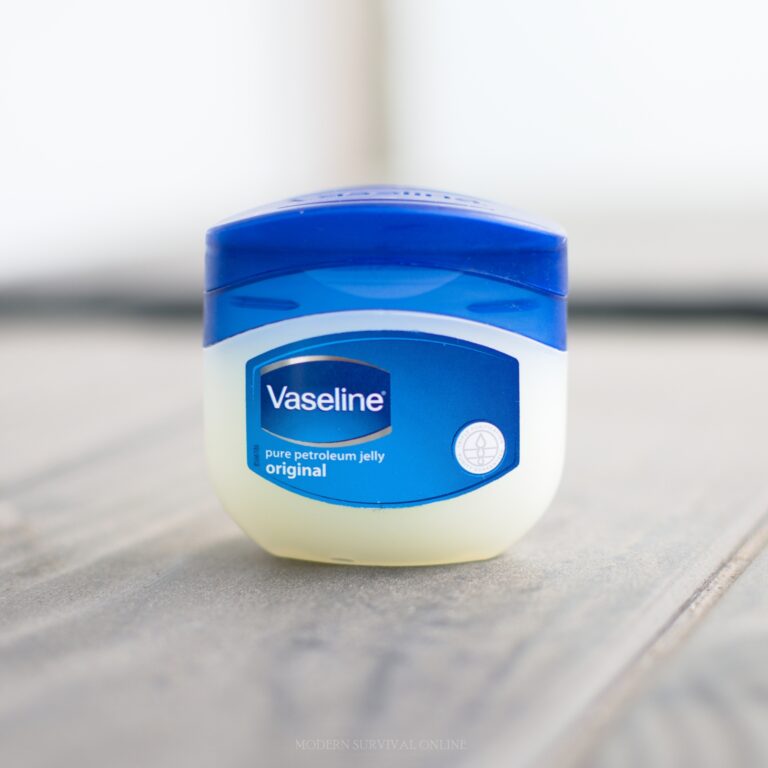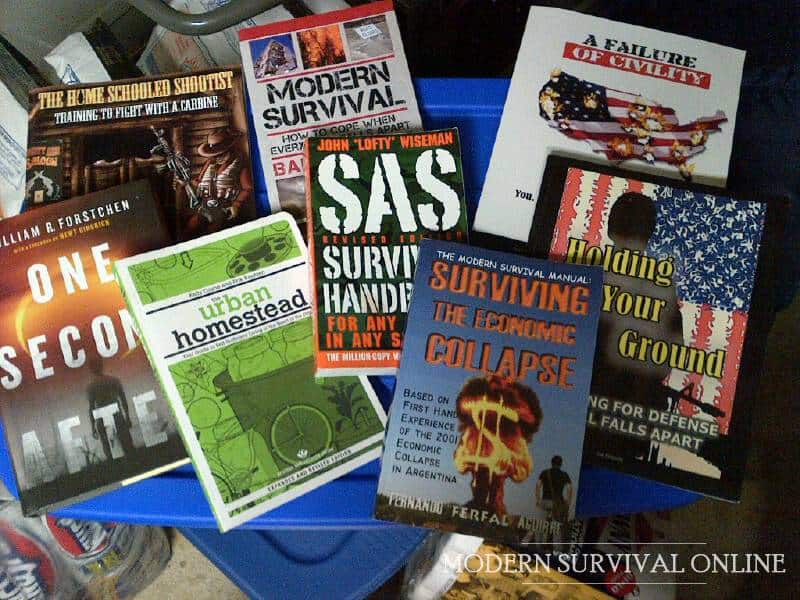One of the very worst things that can possibly happen to you is a house fire. Not only are they extremely deadly, but it will burn up your shelter and all of your expensive preps.

If it happens in the middle of or as a result of some other disaster situation, you’re really going to be up a creek, sans paddle.
Accordingly, it’s important to understand how the materials and supplies we keep in our homes could contribute to our overall fire risk.
There are some things that you just wouldn’t expect, too. How about petroleum jelly? Is petroleum jelly flammable?
Petroleum jelly is non-flammable, and is difficult to ignite with a flashpoint around 400 °F (204 °C). Intense open flames might cause it to burn, and a high enough temperature will cause it to melt or release flammable gases which can be a hazard.
I know it sounds almost too good to be true, but the petroleum of jelly really isn’t that much of a fire hazard unless you’re storing huge quantities of it.
Chances are the container you have in your bathroom, tucked away in a closet or a medicine cabinet is not going to contribute negatively to a fire or cause it one way or the other.
Nonetheless, there’s plenty more you’ll want to know about it, so keep reading.
Is Petroleum Jelly Combustible?
No, petroleum jelly is not combustible either. Combustible materials don’t meet the strict definition of flammability according to the NFPA or OSHA, but might still ignite at a higher temp.
Petroleum jelly isn’t even considered combustible!
But Petroleum Jelly Has Petroleum. Doesn’t it Burn?
Petroleum jelly, despite its name, is not as combustible as you might think. It’s true that it’s derived from petroleum, obviously, but the process by which it is made significantly alters its properties.
The raw petroleum is heavily refined and processed before it becomes the smooth, translucent jelly we all know and, for some of us, love.
The point is that this extensive refining process drastically reduces its flammability. So, while petroleum in its crude form is indeed highly flammable, petroleum jelly is not.
Does Petroleum Jelly Ignite at Any Temperature?
Yes. Petroleum jelly can ignite, but it typically needs a direct flame or extreme heat and does not burn easily or very well unlike some other things in our homes.
Petroleum jelly behaves a little differently from what you might expect when ignited: When exposed to a direct flame, it will eventually catch fire and burn, but the burn is typically slow and not too intense.
This is due to its high flash point, meaning it requires a much higher temperature to ignite compared to many other substances. Therefore, although it’s flammable in the strict technical sense, petroleum jelly is not considered a high fire risk.
Does Petroleum Jelly React with High Temperature?
Yes. Petroleum jelly does react to high temperatures: When exposed to elevated temperatures, it undergoes a physical transformation rather than a chemical one.
It shifts from its typical semi-solid state to a liquid one. This change in form doesn’t make it more flammable per se, but it can make it easier to ignite if it comes into direct contact with fire.
Make no mistake, very high temperatures do increase the ignition hazard, but this is true for many substances, not just petroleum jelly. We’ll delve deeper into this in the next section…
Petroleum Jelly Will Release Flammable Fumes at High Temperatures
The manufacturer of Vaseline, the most popular petroleum jelly in the US, has stated that petroleum jelly will start to emit flammable vapors around 400 °Fahrenheit or 205 °Celsius.
We can assume most other petroleum jellies are similar. While this might seem alarming, it’s important to put it into context…
The conditions under which petroleum jelly would reach this temperature are quite extreme and highly unlikely in everyday settings.
If they are encountered, there’s likely already a fire nearby! But jokes aside, under normal circumstances, like storing it in a hot garage, shed, or car, there’s no cause for concern whatsoever.
And if a situation arises where the jelly does reach its flash point, you likely have larger issues at hand!
If Petroleum Jelly is Liquified, it Will Catch Fire More Easily
Petroleum jelly’s semi-solid state is an important part of its safety profile. But when this substance shifts from its typical jellied form to a liquid one, it becomes more prone to ignition.
This poses other, subtler hazards, too: The liquefied product can seep out of containers or spread across surfaces, potentially causing unexpected and seriously hazardous fires.
Thus, it’s crucial to store petroleum jelly in cool, safe places, and be mindful of nearby heat sources that might cause it to melt and run.
Will Petroleum Jelly Make a Fire Worse?
Yes. Petroleum jelly will intensify a fire under certain conditions. But do know that a small quantity of petroleum jelly is unlikely to significantly worsen a fire as it would burn up quickly.
However, the situation changes with larger quantities. A large amount of petroleum jelly, maybe a case of jars or a barrel of the stuff, serves as a significant fuel source.
If it tends to melt and release flammable vapors it will greatly feed a fire. Therefore, it’s crucial to handle and store large quantities with due caution to prevent any fire-related accidents.
Is Petroleum Jelly Reactive with Other Substances?
While petroleum jelly is generally safe and stable, it’s not entirely non-reactive. One of its notable reactions occurs when it comes into contact with strong oxidizers, or concentrated oxygen.
Under these circumstances, petroleum jelly can spontaneously combust. This is a critical consideration in medical settings, particularly for patients undergoing oxygen therapy!
For safety reasons, any petroleum jelly product should never be applied to the lips or nose of someone receiving oxygen treatment.
How Should You Deal with Petroleum Jelly Exposed to Fire?
When faced with a fire involving petroleum jelly, the most effective response typically is using a dry chemical, chemical foam, or CO2 fire extinguisher.
These types of extinguishers work by smothering the fire, effectively cutting off the fuel ignition cycle. Water and water-based fire extinguishers can also be used, but they tend to be less effective.
This is because petroleum jelly repels water, making it harder for water-based solutions to do the job. As always, having the best extinguisher for the task at hand increases the likelihood that nothing bad will happen.
The post Is Petroleum Jelly (Vaseline) Actually Flammable? appeared first on Modern Survival Online.
via Modern Survival Online https://ift.tt/mfHshK9



